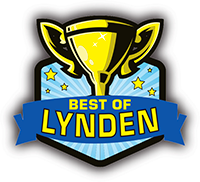Whatcom Lawns offers Healthy Lawn Packages; ongoing treatments to keep your lawn looking great. We create a custom combination of the following services, based completely on the needs of your lawn. Call or request a quote today to schedule a consultation at no charge to receive your health lawn package proposal!
Lawn Aeration
Lawn aeration is the process of mechanically pulling plugs of soil from your lawn. The plugs are deposited on top of the lawn during this process, which break down and help decompose existing thatch in the lawn. The purpose of aeration is to
- Allow your lawn to relieve soil compaction
- Allow water and fertilizer into the soil
- Allow the roots to grow deeper into the soil
- Give the roots room to expand
Whatcom Lawns’ team of professionals is fully trained to expertly aerate your lawn neatly and efficiently. Specifically, aeration helps your lawn in the following ways:
- Increases air exchange between soil and air
- Reduces soil compaction
- Enhances thatch decomposition
- Encourages deeper, healthier root growth
- Conserves water by increasing soil intake
- Boosts nutrient intake
- Makes turf more tolerant of heat and drought
- Increases soil resiliency and cushion
- Reduces water puddles and runoff
Whatcom Lawns can give you a healthier and greener lawn by utilizing the process of aeration. Soil compaction will not break up with one session of aeration but will most likely need to be completed one to two times annually, depending on the severity of soil compaction. However, the benefits will definitely show as you continue to ensure that your lawn is healthy by regularly aerating it.
Lawn Moss control
Moss is very invasive in the Pacific Northwest! It can grow in lawns and even on other hard surfaces. Whereas weeds thrive in sunlit areas of your lawn, moss thrives in shady areas that aren’t in direct sunlight. Moss can flourish for many reasons including:
- Poor lawn drainage
- Soil compaction
- Poor ground fertility
- Improper mowing practices
- Too heavily shaded
Call today to schedule a lawn consultation. We can recommend a custom-made course of action fixing the issues causing moss in the lawn including but not limited to:
- Consistent mowing and height of cut
- Lawn aeration on a bi-annual or annual basis
- Tree thinning for better light and air flow
- A consistent fertilization and weed control program
- Liming
- Iron application (for a moss die back)
- Thatching
- Slicer seeding
Lawn Fertilization and Weed control
Whatcom Lawns has developed a program to ensure your lawn is being consistently fertilized, and well-balanced with weed control.
- Early Spring Fertilizer and Weed Control
A complete balance of dry slow-release fertilizer for fast green-up and broad leaf control. - Hot Summer Fertilizer and Weed Control
A complete balance of dry slow-release fertilizer and broad leaf control. - Summer Fertilizer and Weed Control
A complete balance of fertilizer and broad leaf control. - Fall Fertilizer & Weed Control
A complete balance of dry winter-feeding fertilizer that promotes root development, along with broad leaf control.
Lawn Overseeding
Whatcom Lawns offers lawn overseeding solutions for your lawn. While at times lawn replacement is the preferred option, many times an existing lawn can be overseeded and rejuvenated to look amazing once again! We highly recommend consistent watering and healthy lawn applications after a overseeding to keep it looking great.
Overseeding usually involves the following steps:
- Bagger mow the lawn as low as possible
- Trim and edge the lawn
- Thatch the lawn
- Clean up, haul away and dispose of the thatch
- Thatch the lawn again in a different direction
- Clean up, haul away and dispose of the thatch
- Bagger mow the lawn to remove any left-over debris
- Apply moss control to the lawn
- Double aerate the lawn to expose extra soil for the slicer seeder
- Apply starter fertilizer
- Slicer seed the lawn in two directions
- This will bury the seed in the soil
- Clean up, haul away and dispose of the moss and thatch resulting from the slicer seeding
Depending on the situation, we may not need to thatch.
Annual Overseeding
This is a great option to keep your lawn looking great with a more consistent grass type! We typically add annual overseeding to a lawn in early Fall. The idea is that this is less of a project than the amount of preparation that is needed for a neglected lawn, and more of an ongoing maintenance to keep the lawn looking healthy with a consistent great look.
- Slicer seed the lawn
- This will bury the seed in the soil
Grub Control
Whatcom Lawns offers grub control for your lawn. We suggest this treatment twice a year; early Spring to discourage grub larvae and early Fall to discourage crane fly activity. Grub control is beneficial for you lawn for several reasons listed below:
- Prevention of Lawn Damage: Grubs, the larvae of certain beetles, feed on grassroots, causing significant damage to the lawn. Grub control helps prevent this damage by targeting and eliminating these larvae before they can harm the grass.
- Promotion of Healthy Turf: By preventing grub infestations, you maintain the health of your turf. Grubs can create patches of dead or dying grass, and controlling them ensures a lush and green lawn.
- Reduced Attraction to Pests: Grubs are a food source for various pests, such as birds, moles and voles, and other insects. Effective grub control reduces the attractiveness of your lawn to these pests, preventing further issues.
- Cost Savings: Repairing a lawn damaged by grubs can be expensive. Investing in grub control is a proactive measure that can save you money in the long run by avoiding the need for extensive lawn restoration.
- Conservation of Water and Nutrients: Grubs disrupt the absorption of water and nutrients by damaging grassroots. By controlling grubs, you optimize the lawn’s ability to absorb essential elements for growth, leading to improved overall turf health.
- Preservation of Aesthetic Appeal: A well-maintained lawn enhances the aesthetic appeal of your property. Grub control contributes to a visually pleasing lawn by preventing unsightly brown patches and promoting a uniform, healthy appearance.
In summary, grub control is good for your lawn as it protects against damage, supports turf health, reduces pest attraction, saves costs, conserves resources, and maintains the aesthetic quality of your outdoor space.









